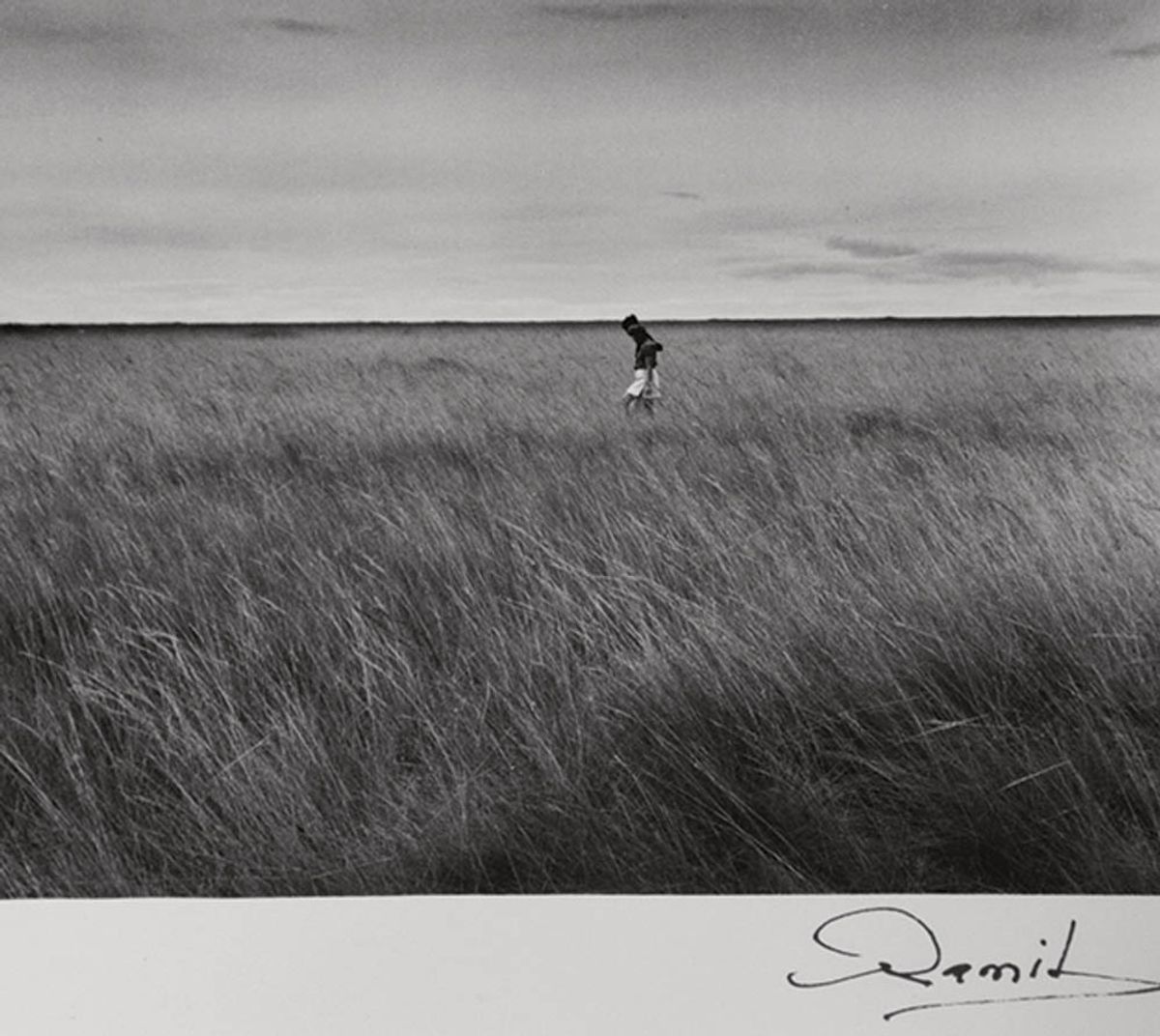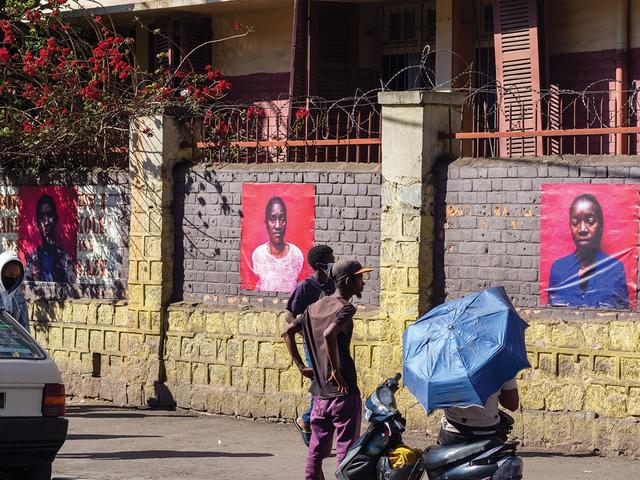It would be easy to pass by Antananarivo’s most storied photography studio. But Techni-Photo does not need to advertise itself. For everyone in Antananarivo, or Tana, as it is known, will know Ramily, the late photographer who, for many decades, was the only consistently operational photographer in Madagascar, and thus an unrivalled chronicler of the modern history of the unique island that rests in the Indian ocean, 400km off the south-eastern coast of Africa.
Today, Ramily’s studio is in Itaosy, a teeming but little-visited suburb just south of Madagascar’s capital. Close by, packed together, are scores of improvised homes topped with sheets of corrugated iron. Chickens pick at the ground, stray dogs laze in the sun, people weave through the paths of speeding traffic. The studio is not far from the Ikopa river, which winds its way through the city’s valleys — its banks have burst once again from the ever-worsening monsoons, and the studio could soon be flooded.
Let us hope the water recedes. For this unassuming place is a treasure trove of modern history. In the still-working studio’s back rooms lie thousands upon thousands of photographs, most of them left unseen for decades. They comprise a comprehensive and intimate insight into the modern social history of Madagascar. And they are now being discovered for the very first time.
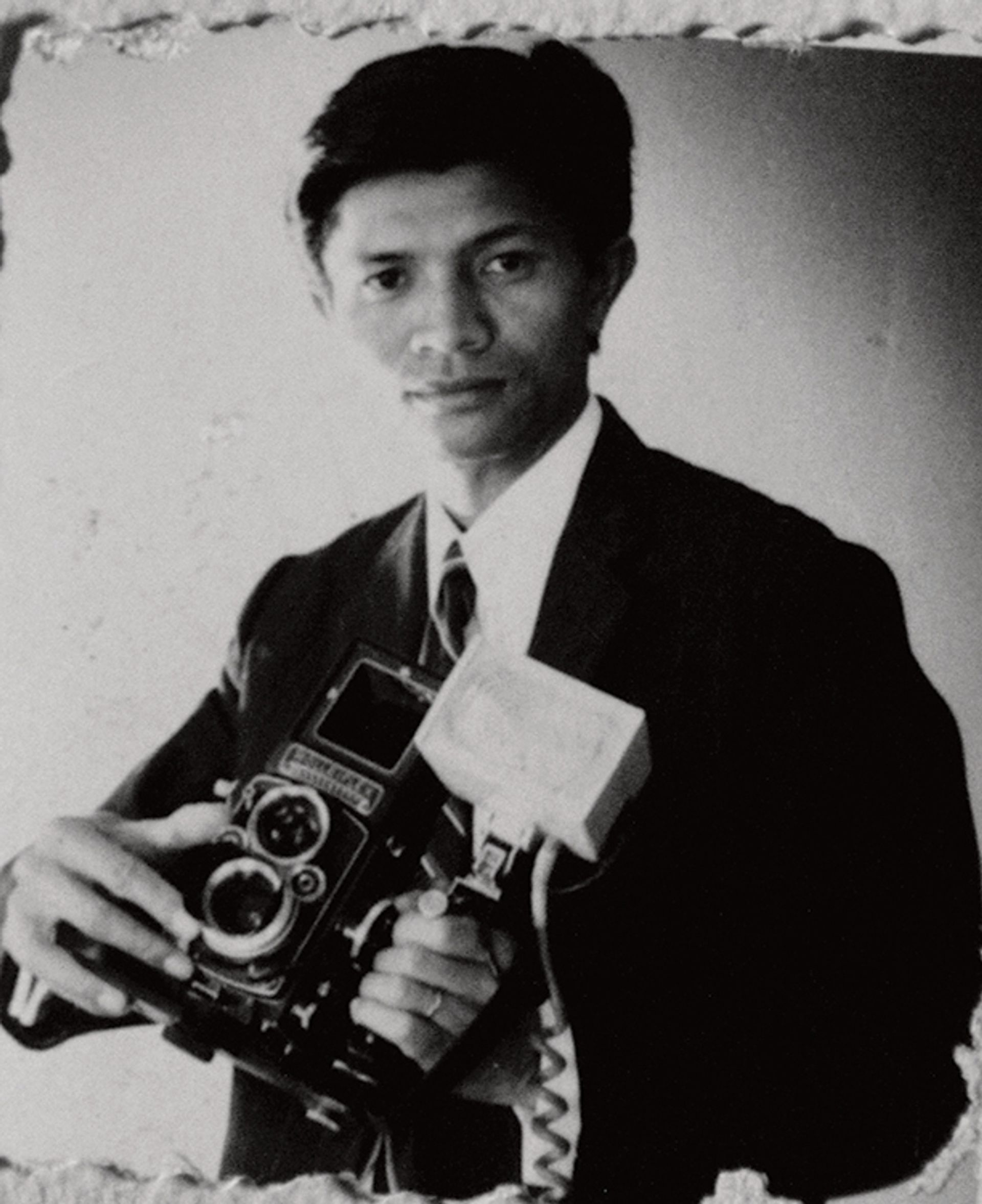
Ramily, Self-Portrait © Ramily, courtesy of Techni-Photo and Hakanto Contemporary
Ramily, whose real name was Emile Rakotondrazaka, will not live to see his photographs celebrated beyond Madagascar — he died on 26 March 2017, bequeathing his son with the studio. He was born in 1939 into poverty in 1939, one of 12 children, and was witness, in his early 20s, to the at-times violent Madagascan independence movement that saw French colonists eventually pack up and leave the island to define its own identity.
When independence finally came, on 26 June 1960, Ramily was working as an assistant at PhotoFlex studio in the upmarket neighbourhood of Analakely. In the mid-1960s, as Madagascar began to write its own history as a post-colonial nation, Ramily left to go it alone, founding Techni-Photo in the less salubrious Itaosy. His studio would soon be the only operational image laboratory in the city, and country at large.
Throughout his life, Ramily worked in black and white, and would process his images in a chemical darkroom he invented with the help of aged technical manuals that still line the shelves. The studio, which continues to be run by his son, still contains the aged chemicals and worn, grooved equipment Ramily used to manually process and print the images throughout his life.
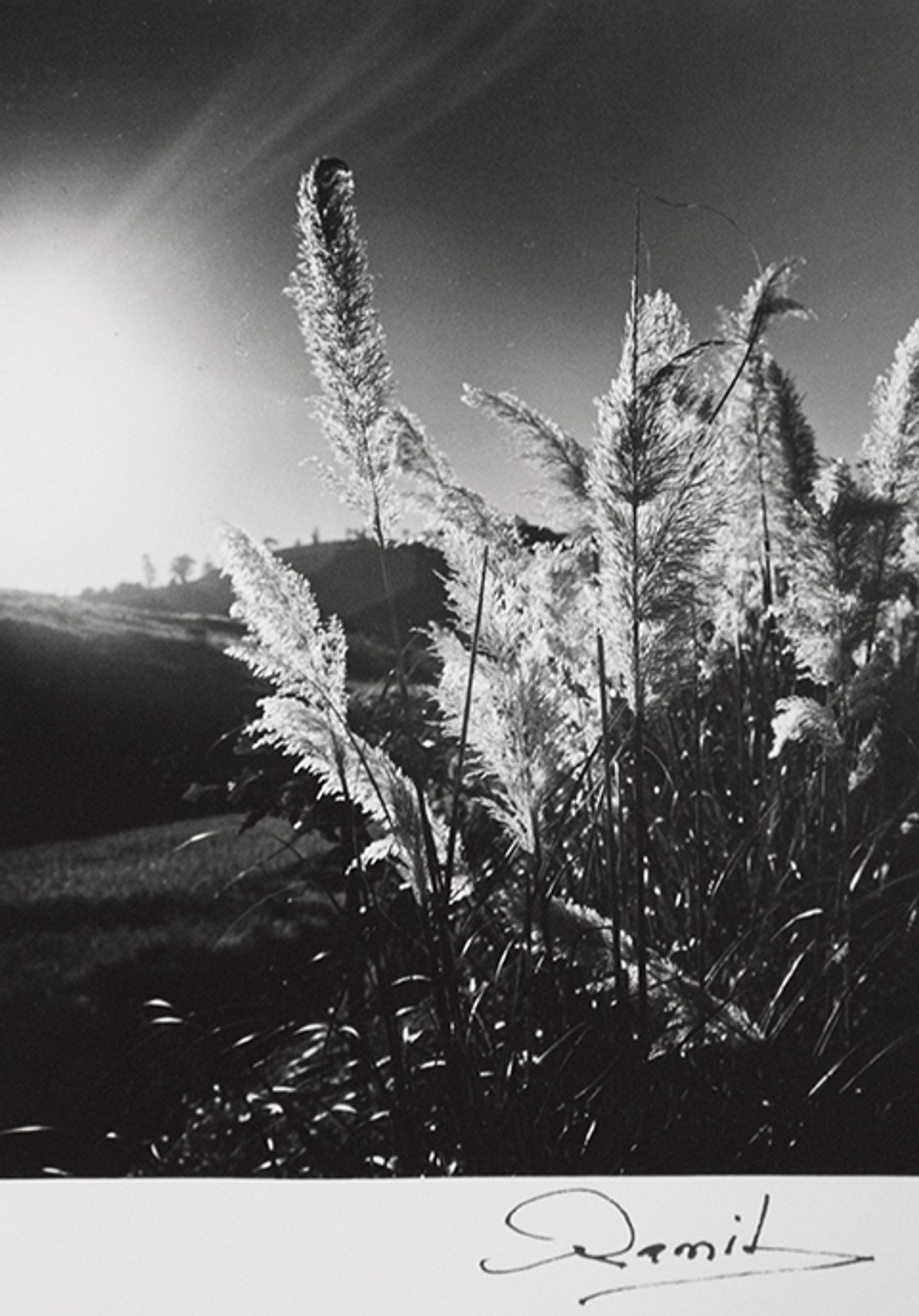
Ramily, Les Reflets du Coucher de Soleil a Soavinandriana © Ramily, courtesy of Techni-Photo and Hakanto Contemporary
Ramily has never been exhibited beyond Madagascar. Indeed, beyond one show in 1981, at the Hall of Air Madagascar on Avenue de l’Indépendance, his photography was not exhibited in Antananarivo either.
But that is not to say it has not been seen. Many families in Tana will treasure an original Ramily photograph of their own. He was the man to call whenever a rite of passage took place; in a city of more than 500 churches, Ramily was on hand to take photographs of innumerable weddings, communions, christenings, funerals and community moments. The front rooms of his studio were something of a set — Ramily would pose Tana’s citizens, dressed in their finest clothes, for precious portraits. Oftentimes, his image was the one and only occasion his subject would ever be photographed.
But Ramily was not just a studio photographer. Nor was he restricted to photographing community life. The archive contains countless cityscapes of Tana, many looking across the city’s iconic Lake Anosy towards the Rova, a palace built on the city’s highest peak. For much of its history, Antananarivo was largely concentrated around the Rova, an area today referred to as la haute — ‘upper town’. When the country gained independence, Anntanorivo’s official population was 261,000. Today, it has exploded into a modern metropolis of what some estimate is home to more than four million people, many of whom live unofficially, in improvised and often precarious conditions. Now, from the vantage point of the Rova, the city stretches almost as far as the eye can see.
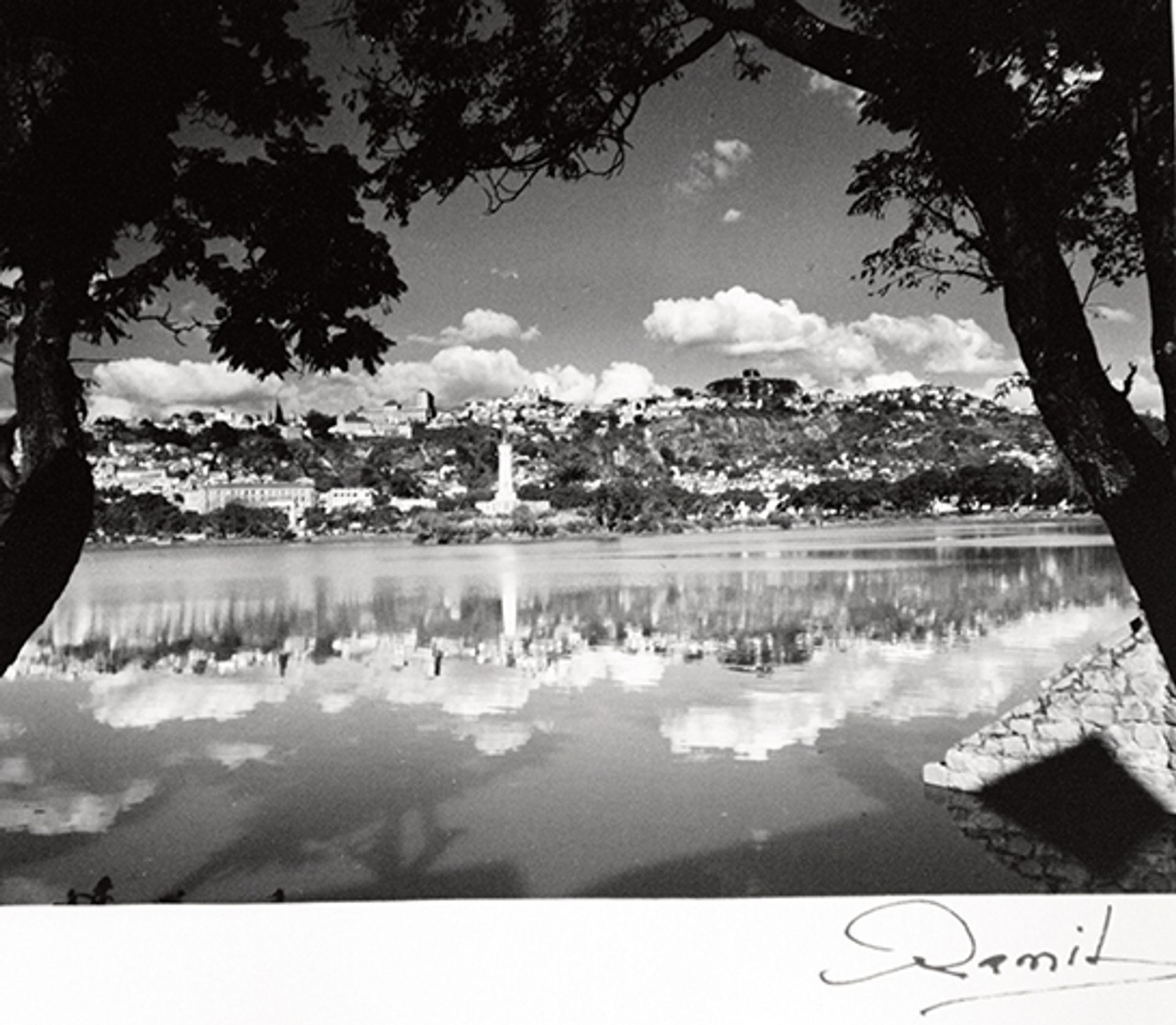
Ramily, Les Deux Visages du Lac Anosy (the two faces of Lake Anosy) © Ramily, courtesy of Techni-Photo and Hakanto Contemporary
Ramily also travelled the country at large. Madagascar is home to more than 1,500 species that are endemic to the island, making it the most varied and unique ecosystem in the world. He photographed the different wilds of the country, with its many unique animals and plants, long before it became the setting for the eponymous Hollywood children’s film and a Western safari destination.
On 30 April, Hakanto Contemporary, the city’s first major arts centre, will for the first time show a curated retrospective of Ramily’s photography. The exhibition, which is curated by Hakanto’s artistic director Joël Andrianomearisoa, will seek to recreate the set in Ramily’s studio, and include images Ramily took from the beginning and end of his career, spanning social portraits, Malagasy landscapes and Tana’s historical cityscapes. The images will be presented alongside newly commissioned texts by Malagasy artist and sociologist Ludonie Velontrasina.
Hakanto will now work to preserve and scan the negatives and processed images before they deteriorate further.
• Ramily: the One Who Will Reveal the Day, Hakanto Contemporary, Antananarivo, 30 April-30 July


